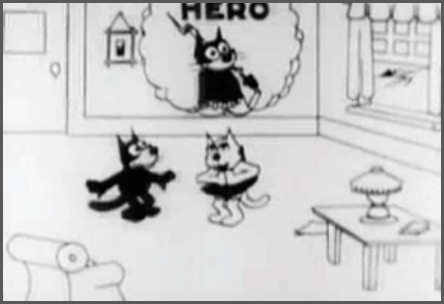One of the best ways to learn is to study what others have done; that is no surprise. If you wanted to be a soccer (football) star as a child, maybe you watched Pelé on TV and imagined yourself scoring goals the same way.
Animation is the same. So for the rest of the chapter, we will be looking at what animators learned and what you can learn from them to make lively animation. You will see their early crude animations and how the animations quickly became more dynamic and entertaining. If you know about the 12 principles of animation, and are in a hurry to learn more about using Blender, you can proceed onto the next chapter. But then again, as an animator, you'll probably enjoy watching these animations anyway.
Think of who your animation heroes are, and make a bookmarks folder in your web browser to store the addresses of websites about your favorite animators, or animations that you have seen. Now go online and look at some works that you know, whether it's Disney's Fantasia, South Park, or Plumiferos (Free Birds), which is the first feature length film made entirely in Blender (you can find out more at http://www.plumiferos.com/). Add a link to your folder whenever you find something you like. You can find quite a number of interesting animations by just looking around on the web. These are some that I found, Nina Paley's "Sita Sings the Blues" is a feature animation done by one person in Flash. It's pretty amazing. I also found "Snow-bo" by Vera Brosgol and Jenn Kluska, and "Kenya" on the Weebl's Stuff website. There are many great Blender animations at www.blenderartists.org.
Your list will be different from mine of course.
We are going to go into the past, back to when animation was young. We are going there because there are general issues that everyone encounters when trying to put graphics into motion. Early animations were simple, so it is easiest to see the fundamental animation techniques done and to see examples of where it wasn't done so we can see the difference.
Back then, like now, animators were under pressure; they had a short time to turn out a completed animation. They ran into issues such as what was required to tell a story believably, what kind of look to give it, how to make it easy to do, and how to get it done before their deadline. They also had to answer questions such as how to tell the story, how to get all the art work done, and how to photograph it with a camera. A lot of the answers they came up with are now universal.
First, we are going to look at a Felix the Cat animation called Felix Turns the Tide made a few years after World War I. It was a silent animation and cutting edge for its time, but pretty primitive by modern standards, as you can see in the following screenshot. From the thought balloon and text borrowed from newspaper comics you can see that animation hasn't come too far from its roots.

It's a good place to start because they had figured out the mechanics of making an animation, but they were just beginning to learn how to do animation well. In this book, you will learn both the mechanics of Blender animation, and how to do it well. It's a learning experience we will share with these pioneers—so we're in good company!



